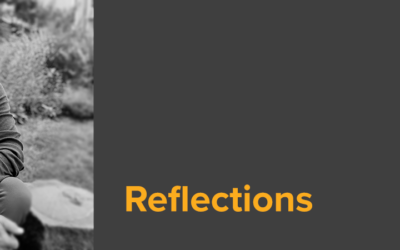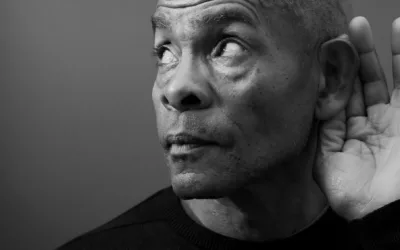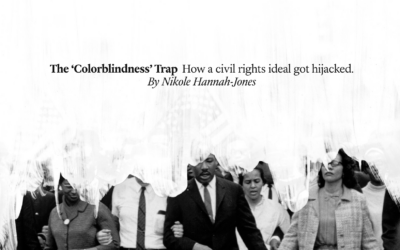Your Choice: Moving through Stereotypes an article
We’re all familiar with stereotypes — they are simplified, fixed beliefs about a group of people. Most of us can quickly call to mind stereotypes about lots of groups. Think for a moment about the stereotypes you have heard expressed about older people, teenagers, Jews, Muslims, Christians, women, black men, white men, blondes (blonde women that is), overweight people, welfare recipients, rich people, lawyers, politicians, New Yorkers, or vegetarians. There’s no doubt stereotypes exist in our society.
The Effects of Stereotyping
Many of the negative stereotypes are brutal. What may surprise you is that even so- called positive stereotypes can have a negative impact. Consider these…
“Asians are good in math.” “African Americans are good at sports.” “Men are good leaders.” “Women are good nurturers.”
Stereotyping affects both the person who holds the stereotype and the person being stereotyped. By seeing all people in a group as the same, you deny people their individuality. If you apply fixed beliefs about a group to an individual, you distort your ability to get a clear view of that person. This may lead you to prejudge or misjudge others.
If you have ever been stereotyped, you know it is often demeaning and offensive. If others treat you as less valuable or limit your opportunities based on negative pre- conceptions about “your group,” it can have serious consequences on your life.
This is true even with the positive stereotypes. Imagine being the Asian-American student who loves marketing, yet the guidance counselor steers you to accounting, based on the counselor’s beliefs that Asians are good in math.
How to Recognize Stereotypes
In our society stereotyping is prevalent. The key is this — become cognizant of stereotypes when they occur so you can make conscious choices about how to address them.
Some stereotypes are blatant, such as “They all look the same” or “They are all _______.” Most stereotypes surface in more subtle ways. They may be mixed in with other information and passed off as facts. They may be “just a joke.” Regardless of the packaging, stereotypes are all based on the same thought process that clumps individuals together as members of a group, with no acknowledgement of individual differences.
Stereotypes typically have three characteristics:
- 1) They imply that all people in the group are the same.
- “You know how men are.”
- 2) They contain a judgment. Notice that the judgment often reveals more about the stereotyper’s beliefs or expectations than it does about the stereotyped individual.
- “Young people today don’t have a good work ethic.”
- This reflects the mindset of the stereotyper — everyone should structure work the same way he or she does. It does not acknowledge that many younger people work very hard, or that there are different ways to accomplish meaningful work.
- 3) Stereotypes are fairly inflexible. When we encounter someone who does not fit our stereotype, it’s easier to consider that person the “exception to the rule,” rather than question the validity of the stereotype.
- I met an engineer at a large national conference who was a good-look- ing, dark-skinned man from the Caribbean. In the few minutes that we sat together, two people who were introduced commented: “You don’t look like an engineer.”
Even if you personally try to avoid using them, you may still occasionally slip into stereotypes. And you will encounter them in the workplace and in society. In order to deal with stereotypes, you must first be able to recognize them when they occur.
Following is a tool that makes recognizing the subtle and not-so-subtle stereotypes easier. The left column identifies common ways stereotypes are packaged. On the right are examples of each type of stereotype. As you scan the list, notice if you have ever heard similar kinds of stereotypes about various groups.
EIGHT COMMON WAYS STEREOTYPES SURFACE AND ARE PERPETUATED
- Jokes
- Name-Calling/Labels
- Oversimplified Statements Applied to ALL People in a Group
- Stereotypical Descriptors
- Personal Assumptions About Individuals (based on stereotypes held about a group the individual is a member of )
“Do you know what happens when you get three _____________ together?”
“Blue Hair” • “Computer Geek” • “Trailer Trash”
“Young workers today _______________.” • “Immigrants don’t want to learn English.” • “Latinos are __________.” • “You know how Southerners are.”
“Crotchety old man” • “Women are very emotional.” • “Typical white male”
Assuming a woman’s career is secondary to family. Therefore, not offering a career opportunity to a woman that would require her to relocate her family. • Assuming front- line employees don’t have the skill sets for a special assignment, and therefore not considering any front-line employees.
6) Spokesperson Syndrome
Viewing one individual as the spokesperson for an entire group. “Marta, what is the best way to deal with the Hispanic market?” • “Glenn, what do black people think about this?” Identifying an individual from a minority group as a “community leader” if he or she speaks up on an
issue (i.e., in the media).
“We’re looking for qualified minority candidates.” • “A sensitive man”
“Statistics show that most criminals are ___________.” Then treating an individual based on the “statistic.” Note: The statistic could be real or perceived.
7) Descriptors That Evoke Stereotypes Because They Are the Opposite or a Contradiction to an Existing Stereotype
8) “Statistical” Stereotyping
•••••••••••••••• ••••••••••••••••••••••
Note: Stereotypes are so powerful that often we hold on to them even when evidence disproves the stereotype.
“You don’t look like a(n) _____________.” • “You’re not like most _______________.” • “She’s really articulate for a(n) __________.”
Your Choice: Moving Past Stereotypes
Moving past stereotypes requires a conscious choice to treat people as individuals rather than as members of a set — to interrupt stereotypes rather than perpetuate them. In a society where stereotypes abound, this takes vigilance to identify and energy to address.
This article is excerpted from “Ouch! That Stereotype Hurts: Communicating Respectfully in a Diverse World” by Leslie C. Aguilar, 2006. The book provides tips and guidelines for addressing stereotypes and other forms of bias in communication.
More From Our Blog…
My Mid-September Reflections
A moment of reflectionAs I sat down to write this email, I found myself scrolling through the mailing list and recognizing so many names—people I’ve had conversations with that still stand out. Whether it was about Ouch!, purchasing a license or discussing trends in...
The Great Detachment: Why Employee Engagement is at Risk—Especially for Gen Z
As described in a recent article entitled, “The Great Detachment is looming for employees, experts warn—especially for Gen Z” by Lindsay Dodgson, employee disengagement is becoming an increasingly critical issue for companies worldwide. With a staggering cost of over...
Understanding Employee Responses to DEI Initiatives: Insights and Strategies
A recent study sheds light on a previously underexplored aspect of DEI training. While much focus has been placed on the facilitators, trainers and the content of DEI programs, this study examines how employees actually respond to the training. Published in Harvard...
SHRM’s Removal of “Equity” From DEI Framework: A Step Backwards Amid Growing Backlash
In a stunning step in the wrong direction, the Society for Human Resources Management (SHRM), the world’s largest HR association, has removed “Equity” from its “IE&D” framework. What message does this send, especially amid strong pushback against Diversity, Equity...
Navigating the Shifting Landscape of Diversity, Equity and Inclusion Programs
In the midst of the evolving landscape of corporate diversity initiatives, there's a seismic shift underway. The once-prominent acronym "DEI" - representing diversity, equity and inclusion - is notably absent from many company discussions. As explained in the article...
A Groundbreaking New Course: Understanding the Complexity of the Asian American Pacific Islander Experience
With over two decades of experience in the educational sector, Hideko Akashi, founder and lead consultant at Liberation Consulting, has been a steadfast advocate for diversity, privilege, social justice, inclusion and equity. Now, she's opening a new chapter with the...
The Deafening Silence of DEI Allies: A Call to Action in Troubled Times
As we commemorate the legacy of Rev. Dr. Martin Luther King Jr., his poignant words echo through the corridors of history, reminding us of the profound impact of silence in the face of injustice.” In the end, we will remember not the words of our enemies, but the...
DEI LEAP: Empowering Leaders Through Turbulent Times
DEI LEAP: Empowering Leaders Through Turbulent Times As we all know, 2024 has brought a wave of attacks against DEI. A handful of outspoken critics, such as Elon Musk, are misrepresenting DEI and attacking the strategies and practices that are creating more equitable...
The Colorblindness Trap
Read. This. Article. It's important. The Color Blindness Trap: How a civil rights ideal got hijacked Nikole Hannah-Jones is a domestic correspondent for The New York Times Magazine focusing on racial injustice. Her extensive reporting in both print and radio has...
The Unbearable Lightness of the “I’m Sorry if You Were Offended” Apology
Have you ever come across that non-apology apology? You know, the one that goes, "I’m sorry if you were offended," or its close cousin, "I’m sorry that you…" These non-apologies aren't just weak; they can actually inflict more harm and exacerbate hurt feelings. They...










